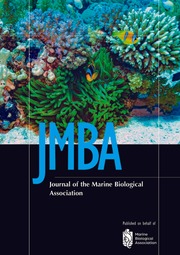No CrossRef data available.
Article contents
Guess who arrived in the western tropical Atlantic? Microcosmus squamiger (Ascidiacea: Pyuridae) records on the Brazilian coast
Published online by Cambridge University Press: 07 October 2024
Abstract
Microcosmus squamiger, an ascidian with high invasion potential, is recorded for the first time in the Brazilian western Atlantic, between Rio de Janeiro and Espírito Santo. The species was found near ports and marinas, and its introduction may have been favoured by intense nautical activity and climatic events such as La Niña. Coexistence with Microcosmus exasperatus, a morphologically similar species, was observed in all localities where M. squamiger was recorded. This discovery implies that a more rigorous process of species identification is necessary during monitoring activities, given that both species can be easily confused (only the syphon spinules differentiate them) and M. exasperatus is widely distributed with collection records dating back more than half a century on the Brazilian coast. The preference of M. squamiger for colder waters suggests that researchers in the Southeast and South Brazil, Uruguay, and Argentina should closely monitor the arrival and possible environmental impacts of this species. The identification of M. squamiger in locations close to bivalve mariculture areas in Rio de Janeiro raises concern, as the species has the potential to compete with bivalves. This study highlights the importance of continuing to monitor the potential spread and the implications of the introduction of M. squamiger into Brazilian waters, as well as its relationship with M. exasperatus, a species already established in this same region.
- Type
- Marine Record
- Information
- Copyright
- Copyright © The Author(s), 2024. Published by Cambridge University Press on behalf of Marine Biological Association of the United Kingdom


